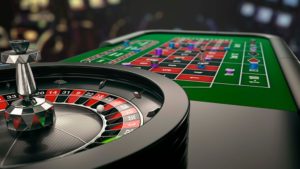
Online slots over the past few decades, have evolved from simple 3-reel games in land-based casinos to complex video slots that you access from anywhere with an internet connection. While the graphics and themes have advanced dramatically, the mechanics that drive slot outcomes and payouts have remained largely the same.
The engine that powers every slot machine, whether online or in a casino, is the random number generator (RNG). This is a computer chip that continuously and randomly generates thousands of number sequences per second. When you hit the spin button, the RNG selects one of these sequences to determine the symbols that appear on the reels. This ensures fair outcomes that are independent of previous spins.
Reel configuration and symbol distribution
Online slots have anywhere from 3 to 7 or more reels, displaying symbols vertically or in more complex diagonal and zigzag patterns. The reels have a defined number of symbol positions, typically ranging from 10 to 100 or more per reel. The game’s programming randomly distributes the symbols with weighted probabilities, dictating how often each symbol will appear. Lower-value symbols like cherries and bars are more common, while high-paying prize symbols have lower frequencies. The number of reels and symbol positions impact the odds and volatility of a game.
Paylines
Paylines indicate the possible winning combinations across the reels. While early slots had a single horizontal payline across the centre, most video slots have multiple paylines that zigzag across the reels in different patterns. For each spin, players select which paylines to activate. The number of active paylines impacts the cost per spin and the number of ways a player wins. For example, with 25 fixed paylines, a player essentially makes 25 bets per spin, one on each line. More paylines mean more winning opportunities.
Payout percentages
The payout percentage or return-to-player (RTP) rate indicates how much a slot pays back to players over time. Online slots typically have RTPs ranging from 92% to 98%, meaning for every $1 wagered, the game pays back an average of $0.92 to $0.98 in winnings. The house edge is the casino’s advantage, which equals 100% minus the payout percentage. These rates are programmed into the game when developed. Higher RTPs favor the player while lower rates favor the casino Visit https://178.128.125.7 to play gaza88 check for more e info here.
Hit frequency and volatility
Two key settings impact a player’s experience – the hit frequency and volatility. Hit frequency tells how often a slot pays out wins, small or large. A higher hit frequency means more spins that result in a win. Volatility indicates the size of potential wins and how often major jackpots hit. Low volatility slots pay small wins frequently while high volatility slots pay less often but have big pay-outs when they hit. Slots are programmed for different levels of risk and reward.
Jackpots and bonus features
Developers program enticing bonus features that add excitement and ways to win. Scatters trigger free spins, multipliers increase pay-outs from 2X up to 1000X or more. Bonus rounds present mini-games like picking hidden prizes and wheel spins for prizes. Progressive jackpots steadily grow from players’ bets across casinos until one lucky spin hits the top prize, which climb into millions before it hits.






